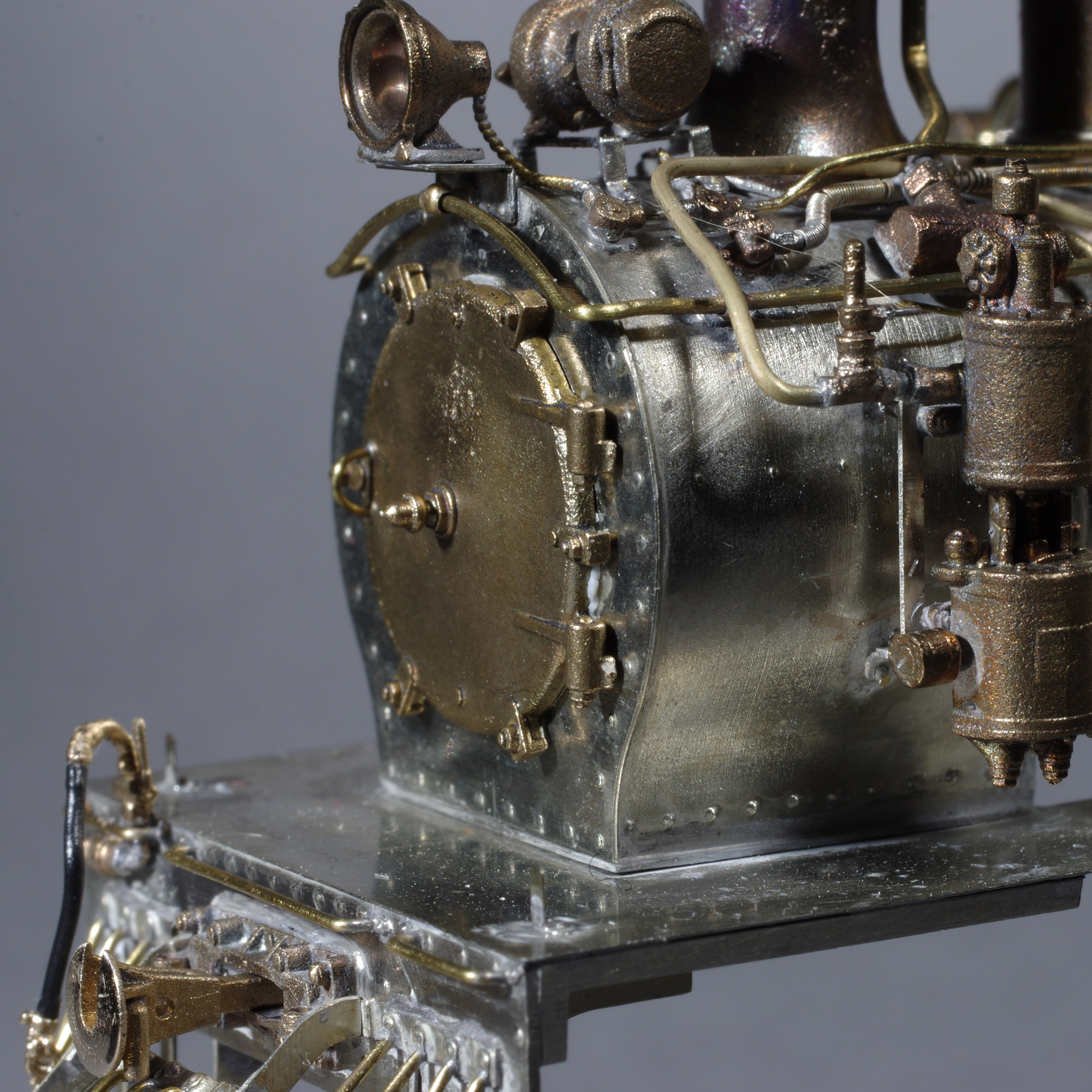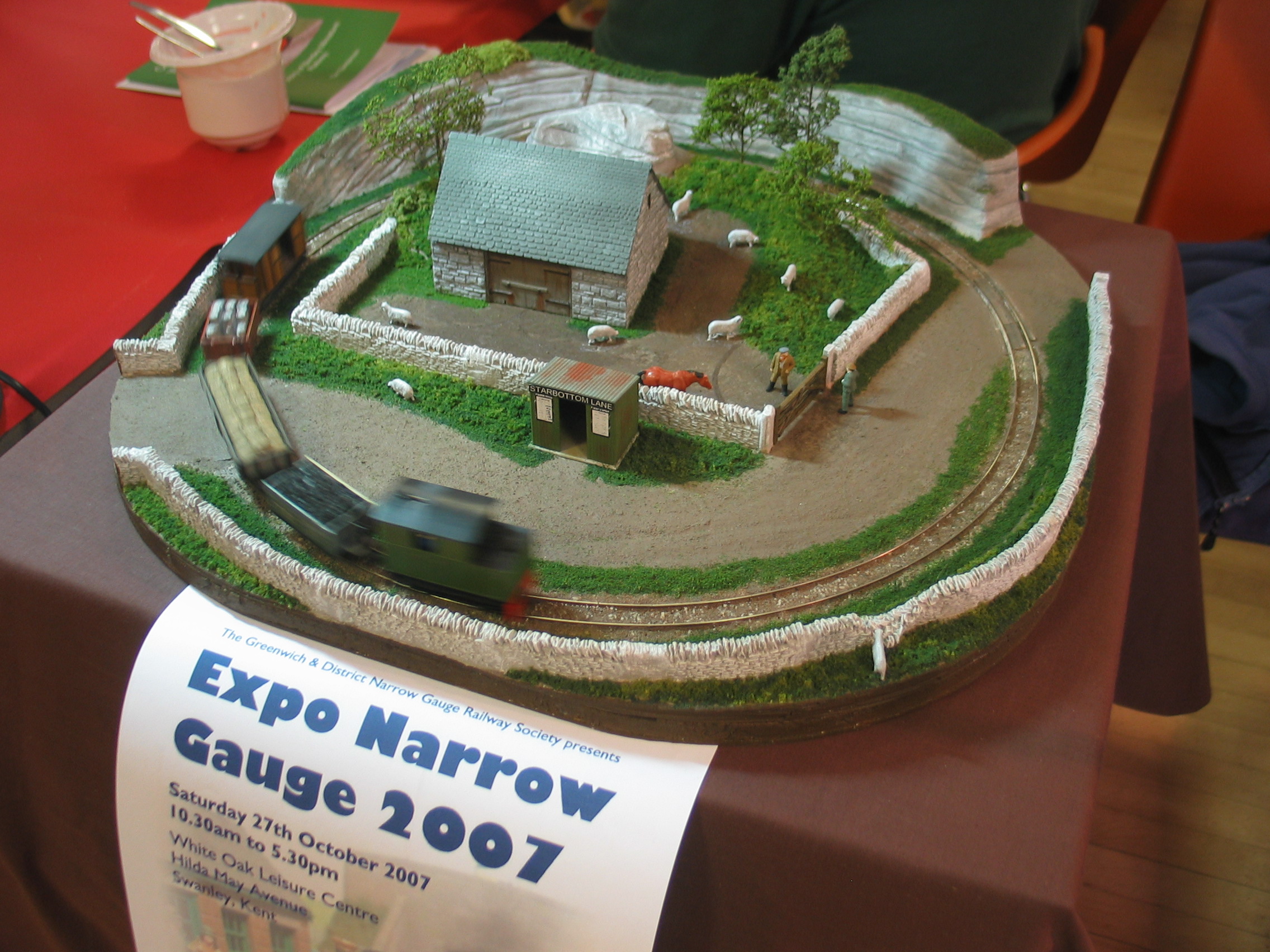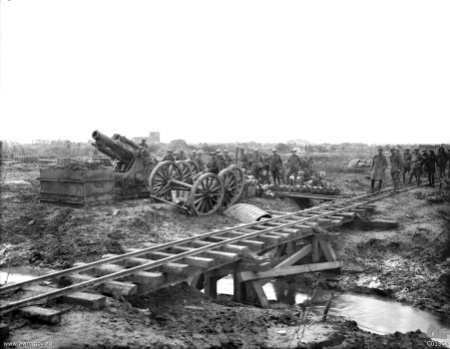|
HOn3½ Gauge
HOn3 gauge represents the modelling of gauge railways in HO scale, resulting in a model track gauge of (the same as H0m and TT scale). Trains are operated using direct current or Digital Command Control over realistic-looking two-rail track. Railways that use the gauge can be found in New Zealand, South Africa, Indonesia, Australia, Taiwan, Japan and others. Manufacturers of Australian outline models in this size include Haskell Models, Wuiske Models, Black Diamond, PGC, Southern Rail and SDS Models. The main focus for Australian narrow gauge modelling has been the large Queensland railway system. More recent releases have included Tasmanian and Western Australian prototypes. In New Zealand, the scale has a few niche manufactures. CMD models and SARModel produce South African and Zimbabwean (Rhodesia Railways) HOn3 models. Most Japanese and Taiwanese HO scale models are made to run on 16.5mm gauge track and are made to 1:80 scale (Tomix, Kato and Tenshodo for Japan bein ... [...More Info...] [...Related Items...] OR: [Wikipedia] [Google] [Baidu] |
HO Scale
HO or H0 is a rail transport modelling scale using a 1:87 scale (3.5 mm to 1 foot). It is the most popular scale of model railway in the world. The rails are spaced apart for modelling standard gauge tracks and trains in HO. The name HO comes from 1:87 scale being ''half'' that of O scale, which was originally the smallest of the series of older and larger 0, 1, 2 and 3 gauges introduced by Märklin around 1900. Rather than referring to the scale as "half-zero" or "H-zero", English-speakers have consistently pronounced it and have generally written it with the letters HO. In other languages it also remains written with the letter H and number 0 (zero); in German it is thus pronounced as . In Japan, many models are produced using 1:80 scale proportions (16.5mm track is still used). History After the First World War there were several attempts to introduce a model railway about half the size of 0 scale that would be more suitable for smaller home layouts an ... [...More Info...] [...Related Items...] OR: [Wikipedia] [Google] [Baidu] |
Sn3½
In rail transport modelling, Sn3½ is a scale/gauge combination derived from S scale to represent narrow gauge track by using gauge track (the same as HO gauge). The scale is 1:64. Sn3½ is popular in South Africa, Australia (particularly Western Australia, Queensland and Tasmania where narrow gauge systems exist) and New Zealand. Sn3½ is very rarely or never used for modelling in other countries with 3 foot 6 (1067mm) gauge railways such as in Japan, Taiwan, and Indonesia Track As track scales down to 16.5 mm at 1:64, modelers use HO gauge track (which represents standard gauge at 1:87 scale) on Sn3½ layouts. New Zealand Sn3½ is the primary scale for modeling New Zealand's narrow gauge 3 ft 6 in railways. The majority of rolling stock available, are white-metal kits, making them considerably more expensive and heavier than other scales and countries. Many of these kits are highly detailed. Buildings are generally hand-made, and track (HO gauge track) ca ... [...More Info...] [...Related Items...] OR: [Wikipedia] [Google] [Baidu] |
List Of Rail Transport Modelling Scale Standards
Rail transport modelling uses a variety of scales (ratio between the real world and the model) to ensure scale models look correct when placed next to each other. Model railway scales are standardized worldwide by many organizations and hobbyist groups. Some of the scales are recognized globally, while others are less widespread and, in many cases, virtually unknown outside their circle of origin. Scales may be expressed as a numeric ratio (e.g. 1/87 or 1:87) or as letters defined in rail transport modelling standards (e.g. HO, OO, N, O, G, TT and Z.) The majority of commercial model railway equipment manufacturers base their offerings on '' Normen Europäischer Modellbahnen'' (NEM) or National Model Railroad Association (NMRA) standards in most popular scales. Terminology Although '' scale'' and ''gauge'' are often confused, ''scale'' means the ratio between a unit of measurement on a model compared with a unit of measurement in corresponding full size prototype, while ' ... [...More Info...] [...Related Items...] OR: [Wikipedia] [Google] [Baidu] |
Rail Transport Modelling Scales
Rail transport modelling uses a variety of scales (ratio between the real world and the model) to ensure scale models look correct when placed next to each other. Model railway scales are standardized worldwide by many organizations and hobbyist groups. Some of the scales are recognized globally, while others are less widespread and, in many cases, virtually unknown outside their circle of origin. Scales may be expressed as a numeric ratio (e.g. 1/87 or 1:87) or as letters defined in rail transport modelling standards (e.g. HO, OO, N, O, G, TT and Z.) The majority of commercial model railway equipment manufacturers base their offerings on '' Normen Europäischer Modellbahnen'' (NEM) or National Model Railroad Association (NMRA) standards in most popular scales. Terminology Although '' scale'' and '' gauge'' are often confused, ''scale'' means the ratio between a unit of measurement on a model compared with a unit of measurement in corresponding full size prototype, whi ... [...More Info...] [...Related Items...] OR: [Wikipedia] [Google] [Baidu] |
List Of Narrow-gauge Model Railway Scales
__FORCETOC__ Railway modelling has long used a variety of scales and gauges to represent its models of real subjects. In most cases, gauge and scale are chosen together, so as to represent Stephenson standard gauge. By choosing a smaller gauge than this for a particular scale, the model represents a narrow-gauge example. Such gauge and scale combinations are of course used for the deliberate modelling of particular narrow-gauge subjects, where the choice of subject is behind the choice of combination. Narrow-gauge modelling has also become especially popular from the purely modelling aspects: it combines a conveniently visible large scale that is easier to work on, with a narrow model gauge that allows tighter radius curves and so fits layouts into smaller spaces. This has been a particular reason in Europe where, houses being generally smaller than in the US, there is rarely space for 0 gauge and even 00 gauge is restricted in the size of curves. At times, particularly in the ... [...More Info...] [...Related Items...] OR: [Wikipedia] [Google] [Baidu] |
2 Ft And 600 Mm Gauge Railways
Two foot and 600 mm gauge railways are narrow-gauge railways with track gauges of and , respectively. Railways with similar, less common track gauges, such as and , are grouped with 2 ft and 600 mm gauge railways. Overview Most of these lines are tourist lines, which are often heritage railways or industrial lines, such as the Ffestiniog Railway in Wales and the Cripple Creek and Victor Narrow Gauge Railroad in Colorado. World War I trench railways produced the greatest concentration of gauge railways to date. In preparation for World War II, the French Maginot Line and Alpine Line also used gauge railways for supply routes to the fixed border defenses. Australia has over of gauge sugar cane railway networks in the coastal areas of Queensland, which carry more than 30 million tonnes of sugar cane a year. Many gauge and gauge railways are used in Amusement park, amusement parks and theme parks worldwide. Exchange of rolling stock The interch ... [...More Info...] [...Related Items...] OR: [Wikipedia] [Google] [Baidu] |
H0f Gauge
H, or h, is the eighth letter of the Latin alphabet, used in the modern English alphabet, including the alphabets of other western European languages and others worldwide. Its name in English is ''aitch'' (pronounced , plural ''aitches''), or regionally ''haitch'' (pronounced , plural ''haitches'')''.''"H" ''Oxford English Dictionary,'' 2nd edition (1989); ''Merriam-Webster's Third New International Dictionary of the English Language, Unabridged'' (1993); "aitch" or "haitch", op. cit. Name English For most English speakers, the name for the letter is pronounced as and spelled "aitch" or occasionally "eitch". The pronunciation and the associated spelling "haitch" are often considered to be h-adding and are considered non-standard in England. It is, however, a feature of Hiberno-English, and occurs sporadically in various other dialects. The perceived name of the letter affects the choice of indefinite article before initialisms beginning with H: for example "an H-bomb" ... [...More Info...] [...Related Items...] OR: [Wikipedia] [Google] [Baidu] |
New Zealand Model Railway Guild
The New Zealand Model Railway Guild is an Incorporated society in New Zealand that exists to provide "...a link between model railway enthusiasts with a focus on modelling the New Zealand prototype." History The Guild began as the model railway section of the New Zealand Railway and Locomotive Society in 1947. Originally known as the New Zealand Model Railway Association, it was renamed as the guild and incorporated as a separate incorporated society on 28 July 1967. Publications The Guild publishes the ''New Zealand Model Railway Journal'' () twice a year. The entire archive of the journal is now online. Special Interest Groups An New Zealand DG and DH class locomotive">DG class locomotive. Several special interest groups exist within the guild, usually specific to model railway scales, such as the NZ120 group, and the 9mm scale group. The most popular scale for modeling New Zealand's railways is Sn3.5. See also * New Zealand Railway and Locomotive Society The New Ze ... [...More Info...] [...Related Items...] OR: [Wikipedia] [Google] [Baidu] |
H0e Scale
HOn30 (also called HOn2½, HO9 and H0e) gauge is the modelling of narrow-gauge railways in HO on N () gauge track in 1:87 scale ratio. Definitions The term HOn30 (and sometimes HOn2½) is generally used when modelling American prototypes while H0e is used for European prototypes. In Britain, the term OO9 is used. All these terms refer to models of narrow-gauge railways built to the world's most popular model railway scale of HO (1:87) but using a track gauge of —the gauge used for N scale models of standard-gauge railways. OO9 refers to OO scale, 1:76.2, models on 9mm gauge track. Although the track gauge is 9mm, sometimes N scale track per se is not used because the ties or sleepers are out of scale and too close together. HOn30 track is available. HOn30 HOn30 is often used to model the gauge railroads in the US state of Maine. The first HOn30 / HOn2½ ready-to-run (RTR) brand introduced in the US was the AHM MinitrainS, initially manufactured by Egger-Bahn and ... [...More Info...] [...Related Items...] OR: [Wikipedia] [Google] [Baidu] |
Rhodesia Railways
The National Railways of Zimbabwe (NRZ), formerly Rhodesia Railways (RR), is a Bulawayo headquartered state-owned enterprise that operates the country's national railway system. It was established in 1893 and is governed by an Act of Parliament. It has a commercial-administrative center in Harare and a supply center in Gweru. The Zimbabwean railway system was largely constructed during the 20th century. History NRZ's history begins with the creation of the Bechuanaland Railway Company on May 24, 1893. It was renamed Rhodesia Railways Ltd (RR) on July 1, 1899.Günter Krause. ''Eisenbahnmuseum Livingstone (Sambia) und die Zambesi Saw Mills Railways''. 2 Ed. 2018. At the same time, on April 13, 1897, the Mashonaland Railway Company (MRC) was founded. On March 1, 1905 the small Ayrshire Gold Mine & Lomangundi Railway Company — which had been founded in 1900 — merged with MRC. A similar event would occur with the Beira & Mashonaland Railway (also founded in 1900), which m ... [...More Info...] [...Related Items...] OR: [Wikipedia] [Google] [Baidu] |
TT Scale
TT scale (from "table top") is a Rail transport modelling, model railroading scale at 1:120 scale with a track gauge of 12mm between the rails. It is placed between HO scale (1:87) and N scale (1:160). Its original purpose, as the name suggests, was to make a train set small enough to assemble and operate on a tabletop. The scale originated in the USA, but is today widespread mainly in Central Europe, thanks to Rokal and "''Tillig, Berliner-TT-Bahnen''", defunct East German manufacturers of train sets in TT. It is the second-most popular scale in Central Europe and Russia, after HO, with several manufacturers based in countries such as Germany and the Czech Republic, and was reintroduced to the United Kingdom in 2022. Adherents to the scale maintain it is the smallest practical scale, especially for those who like to build models from scratch. In wargaming, TT scale equals the 15 mm scale where the height of "standard" soldier height is . For British 3mm TT scale, see 3 ... [...More Info...] [...Related Items...] OR: [Wikipedia] [Google] [Baidu] |





